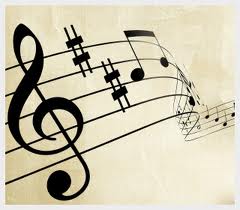 One of the best Master Classes for Piano I have attended was this summer at the Aspen Music Festival & School. Jeremy Denk worked with 4 students that played J.S. Bach, Schumann, Liszt, and Berg piano pieces. The students performed well, but Jeremy Denk demonstrated over & over, as he worked with each student, how to make that music “come alive”. When he played, the piano sang & talked to us! How did he do it? It was how he viewed all the elements he had to work with and the little things, executed well, that made his music so interesting to hear. Would you like your music to “sing & talk” as you play? Here are some of the insights Jeremy Denk shared with the students and us, his audience.
One of the best Master Classes for Piano I have attended was this summer at the Aspen Music Festival & School. Jeremy Denk worked with 4 students that played J.S. Bach, Schumann, Liszt, and Berg piano pieces. The students performed well, but Jeremy Denk demonstrated over & over, as he worked with each student, how to make that music “come alive”. When he played, the piano sang & talked to us! How did he do it? It was how he viewed all the elements he had to work with and the little things, executed well, that made his music so interesting to hear. Would you like your music to “sing & talk” as you play? Here are some of the insights Jeremy Denk shared with the students and us, his audience.
Berg’s Piano Sonata
- Rhythmic Ideas – should have an identity, rhythm is incorporated into the expression
- Beautiful Intervals – in a 2 note slur make sure the 2nd note is not lost – as you play the 1st note think of the note you are going to, as in F# going to A
- Articulation – define ideas, an example: tenuto and legato should sound different
- Touch – different speeds of attack create different sounds, repeated notes should have down strokes & also up strokes, vary the speed of attack and not always fast
- Climax of the Song – should feel like that’s the note you have been waiting for as the song unfolds, the one note you have been waiting to play
- Orchestral Instrument – think of instruments for different song parts, imagine an extremely passionate cellist, or hear a contrabassoon sound in that bass line
- Big Picture – think of the song as a whole, each phrase or motif is a continuing sentence, like a conductor telling a story as he directs instruments through the song
Liszt’s Hungarian Rhapsody
- Variety – 2 notes in a row should never sound the same and the 2nd half of a bar should be different than the first half – use down strokes & up strokes of the fingers
- Mood – lighter sections with “Gypsy freedom” and passionate sections with “the joy of sadness”, not the “death bed where it is too sad, somber, & thick”
- Intimate Color – don’t be afraid to linger there with the beautiful harmonies & overtones, then crescendo and let it go
- Pickups – important as they set the stage, brush keys with fingers
- Touch – keys never “banged”, chord rolls connect music – make them beautiful, LH just responds to RH when it has the expressive focus, & vise versa
- Arpeggios – “heavenly harps” – to make dolce sounds need to have a faster, lighter attack
Schumann’s Kreisleriana
- Melody – dominates modern music, but it is the harmonies that make music beautiful, be sure to bring out the harmonies in the song
- Rhythm – always know where the downbeat is in a song, vary how accents are placed in rhythmic notations to bring a different feel to the rhythm & the ear
- Touch – not factory “reproduced” but “sung” with fingers more caressing the keys, caressing with the notes, less “piano playing”, hear a singer “singing” those notes
- Voicing – need to hear both voices, stereophonic sound between RH & LH to get to the top
- Problem Fingers – thumb & pinky need to sing also, not emphasizing each note but flowing from bar to bar, do what the body would want to do with the fingers
- Mood – sound happy, not angry, just having a good time, not panicking with phrasing, loving & dancing with different colors, the joy of details like a bassoon player
J.S. Bach’s Overture in the French Manner
- Musical Idea – “invention” – Bach is a master at using an idea and then bending it to every imaginable variation. The core vector/energy defines where the song goes.
- Tonality – D Major should sound differently from B minor
- Artistry – not massed produced or regurgitated, more “singing” by you singing through your song as you play, also thinking of a violinist using a variety of bow strings in solos
- Touch – make sure recurring notes sound differently by using down strokes & up strokes and make sure one of the beats feels like an upbeat not a downbeat
- Mood – one of Bach’s most extraordinary pieces with joy, wit, and seriousness. A pianist’s body should move back & forth with the music, shoulders swaying.
